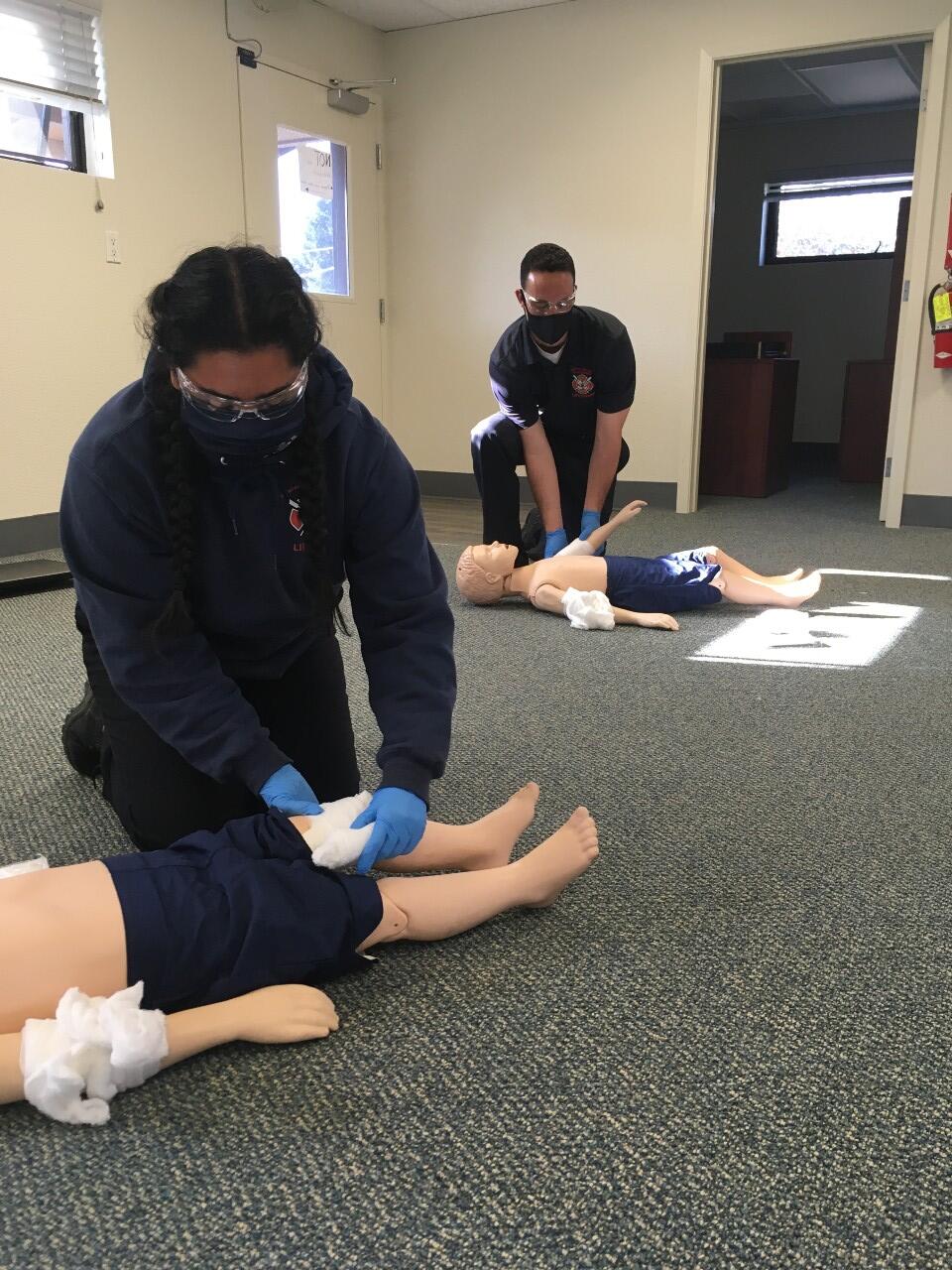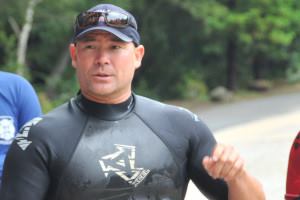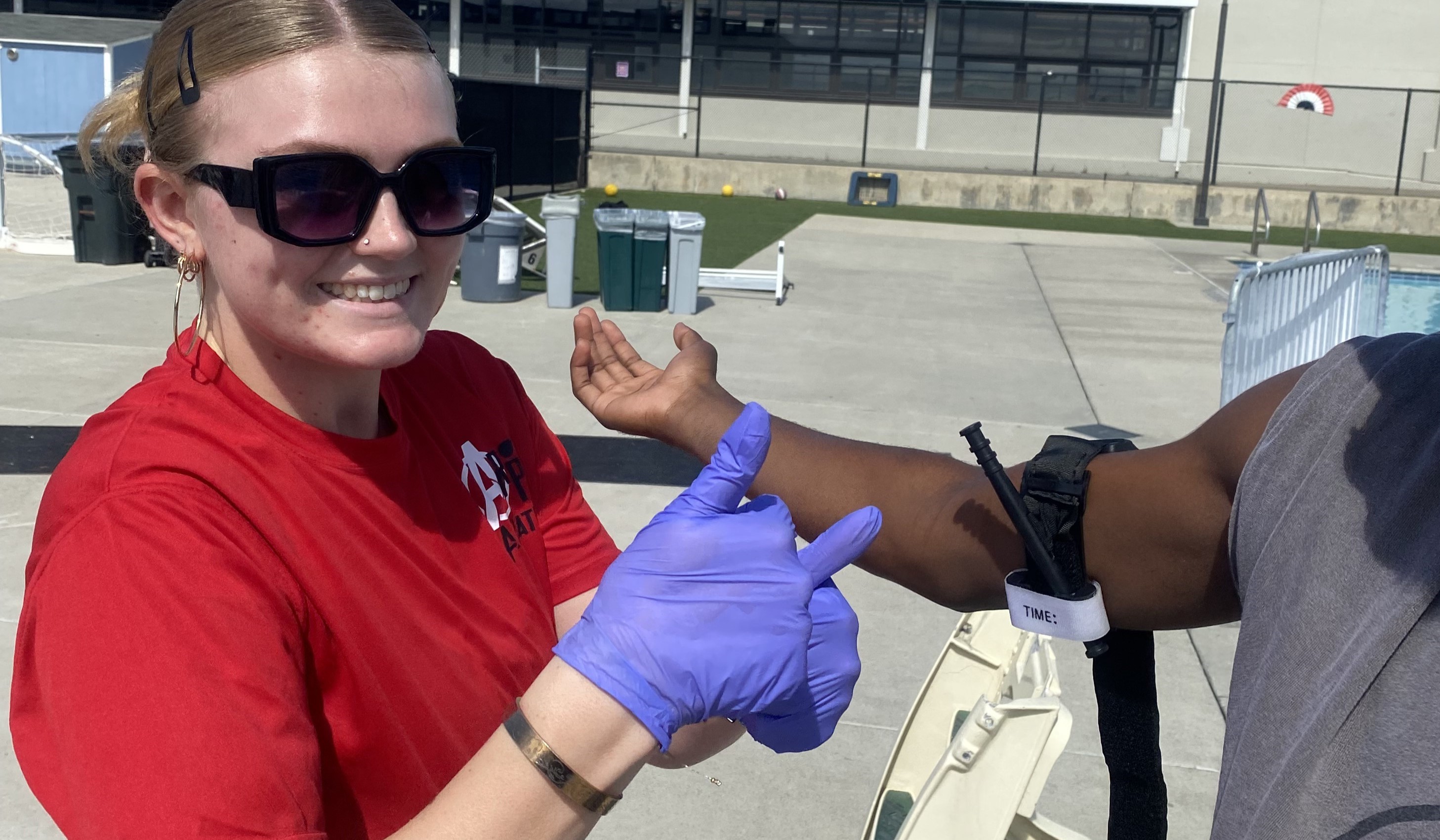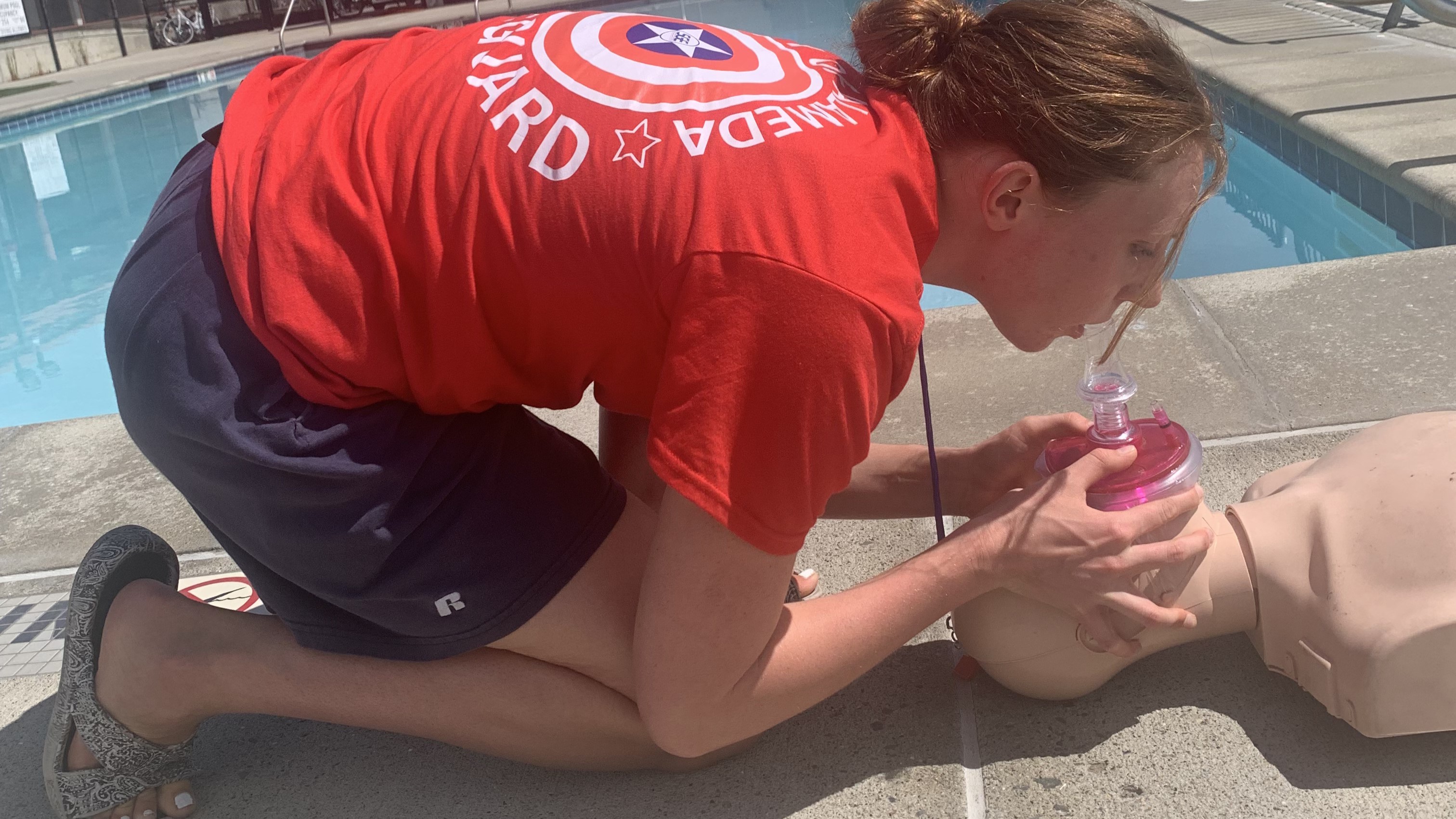Death from uncontrolled blood loss can happen in minutes. It is imperative that we train in controlling external bleeding as much as we train in CPR. Depending on the agency, county and state protocols, lifeguards could be additionally trained to control bleeding using a tourniquet, chest seal, or hemostatic dressings. That’s a lot, considering most first aid uses direct pressure and a band aid, if it involves controlling external bleeding.
Let’s review how to establish a COVID-19-safe environment for in-service related to controlling external bleeding.
Safe Set-up
Before the in-service, all staff should complete the appropriate safe-entry protocols to be allowed at work. This could include answering multiple questions and doing a temperature check.
Reminder: If a lifeguard has any COVID-19 like symptoms, they should not attend the in-service.
• If possible:
• Have in-service training outside in the open air;
• All participants should wear surgical masks and appropriate PPE;
• Everyone should socially distance.
• Each lifeguard should have their own training supplies: gloves, gauze and roller bandages;
• Provide a manikin for each lifeguard, so each can effectively practice and demonstrate direct pressure using a gauze and roller bandage;
• If manikins are not available, lifeguards could use their own arm to demonstrate direct pressure, and their leg for direct pressure and gauze/roller bandage application. Or they could use a pool noodle to simulate an arm or leg.
Before practicing, all guards should be proficient in donning their PPE. Strive for donning full PPE (gloves, mask, gown, face shield, and eye protection/goggles) in under 45 seconds, and donning initial PPE (gloves, mask, and eye protection/goggles) in less than 25 seconds.
It is important to remember that the initial responding lifeguard (who’s in the tower or on walking patrol) will most likely only have with them gloves, mask, and possibly eye protection/goggles. This will determine the type of care they can provide to the patient: directing the patient to initiate direct pressure on themselves while he or she dons their own PPE or after donning their own PPE, providing direct pressure and activating the emergency action plan (EAP) for a secondary rescuer with additional resources.
Stop: Before initial care, if the patient isn’t wearing a mask, provide or assist them in donning one. Police and Fire Departments carry disposable masks.
The secondary lifeguard has several options once they arrive on scene: In full PPE, they could assist the initial lifeguard; they could don full PPE and take over providing patient care so the initial rescuer can put on additional PPE; or, if the initial rescuer is providing adequate patient care, they could transition to providing surveillance within the vacant lifeguard tower.
Drills
Three-LIMB APPLICATION DRILL: Patient is conscious and has a bleeding injury on three limbs.
Objective: Lifeguard will quickly and effectively apply three gauzes with roller bandages to the patient’s three injuries. The rescuer must state that the patient is assisting in controlling bleeding on two of the three injury sites while care is provided.
Timing goal: Three gauzes and roller bandages effectively secured to the patient’s injury sites in under 10 minutes.
SOLO RESCUER SIZE-UP DRILL: Patient is unconscious, has uncontrolled bleeding from a limb.
Objective: Lifeguard will arrive on the scene, do a scene size-up and primary assessment. During the primary assessment, lifeguard will determine the patient has a pulse, is breathing, but has severe bleeding. The lifeguard will need to activate EAP and provide direct pressure.
Note: Direct pressure can be provided via gloved hands directly to injury or with a towel.
Timing goal: Scene size-up, primary assessment, activate EAP, and provide direct pressure in under 30 seconds.
TWO-RESCUER STAGGER-RESPONSE DRILL: Patient is unconscious and has uncontrolled bleeding from a limb.
Note: In two-rescuer drills, each rescuer can have their own manikin next to each other, 6 feet apart. Rescuers work on their own manikins.
Objective: Initial lifeguard will arrive on scene, do a scene size-up and primary assessment. During the primary assessment, initial lifeguard will determine the patient has a pulse, is breathing, but has severe bleeding. The lifeguard needs to activate EAP and provide direct pressure. A secondary lifeguard arrives on scene within 15 seconds of EAP activation, but they do not have a first-aid kit.
Note: Direct pressure can be provided via gloved hands directly on injury or with towel.
Timing goal: Scene size-up, primary assessment, EAP activation, and provide direct pressure in under 30 seconds; request from secondary rescuer a first-aid kit in under 45 seconds.
Once lifeguards are proficient and have switched roles at least twice, transition to these variations:
• Secondary lifeguard returns with a first aid kit. Gauze and roller bandage are applied. Total drill time is less than 90 seconds.
• Both lifeguards arrive simultaneously. They determine who provides initial care and who leaves to activate EAP and return with first-aid kit. Same care is provided as above. Total drill time is less than 90 seconds.
CONSCIOUS TO UNCONSCIOUS DRILL: Patient is conscious and has uncontrolled bleeding from a limb.
Objective: Initial lifeguard arrives on scene, does scene size up, activates EAP and provides direct pressure. Secondary lifeguard arrives on scene within 15 seconds of EAP activation, but they do not have a first-aid kit. The patient goes unconscious. Lifeguards will need to safely lower patient to the ground and continue to provide care.
Timing goal: Scene size-up, EAP activation, and provide direct pressure in under 30 seconds; request first-aid kit from secondary lifeguard in under 45 seconds; safely lower patient to the ground, perform primary assessment, and apply a gauze and roller bandage in under 120 seconds.



